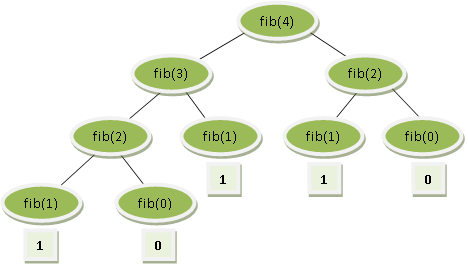Fibonacci, How Many Calls?
By Neilor Tonin, URI  Brazil
Brazil
By Neilor Tonin, URI  Brazil
Brazil
Sometimes when you are a Computer Science student, you’ll see an exercise or a problem involving the Fibonacci sequence. This sequence has the first two values 0 (zero) and 1 (one) and each next value will always be the sum of the two preceding numbers. By definition, the formula to find any Fibonacci number is:
fib(0) = 0
fib(1) = 1
fib(n) = fib(n-1) + fib(n-2);
One way of finding Fibonacci numbers is by recursive calls. This is illustrated below, presenting the tree of derivation when we calculate fib(4), i.e. the fifth value of this sequence:

The first input line contains a single integer N, indicating the number of test cases. Each test case contains an integer number X (1 ≤ X ≤ 39) .
For each test case we will have an output line, in the following format: fib(n) = num_calls calls = result, where num_calls is the number of recursive calls, always with a space before and after the equal sign, as shown below.
| Input Sample | Output Sample |
|
2 |
fib(5) = 14 calls = 5 |